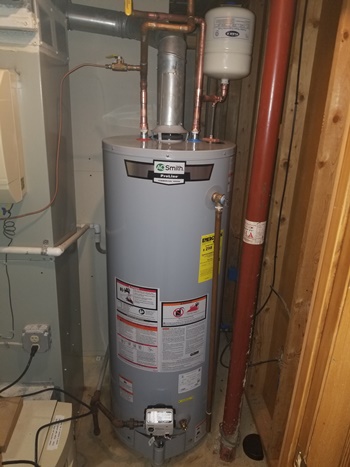Just about every person will have his or her own piece of advice about How to Maintain Your Water Heater & Prolong its Life.

Warm water is important for everyday comfort, whether it's for a revitalizing shower or washing recipes. To ensure your hot water system runs efficiently and lasts longer, normal upkeep is essential. This post gives practical ideas and insights on how to maintain your home's hot water system to prevent interruptions and pricey fixings.
Intro
Maintaining your home's hot water system may seem complicated, yet with a couple of straightforward actions, you can ensure it operates smoothly for years to come. This guide covers everything from understanding your hot water system to DIY maintenance suggestions and understanding when to contact expert assistance.
Value of Keeping Your Warm Water System
Regular maintenance not only extends the life expectancy of your warm water system yet also ensures it operates successfully. Disregarding upkeep can cause reduced effectiveness, greater energy bills, and even early failing of the system.
Indications Your Hot Water System Needs Maintenance
Knowing when your warm water system requires interest can prevent significant concerns. Watch out for indicators such as irregular water temperature, strange sounds from the heating system, or rustic water.
Flushing the Hot Water Heater
Purging your hot water heater removes debris accumulation, enhancing efficiency and lengthening its life.
Monitoring and Replacing Anode Rods
Anode rods protect against rust inside the tank. Evaluating and changing them when worn out is crucial.
Complex Concerns Needing Professional Assistance
Examples consist of major leakages, electric problems, or if your hot water heater is regularly underperforming.
Routine Expert Maintenance Conveniences
Expert maintenance can consist of comprehensive inspections, tune-ups, and making sure compliance with safety and security standards.
Evaluating and Changing Temperature Setups
Readjusting the temperature setups guarantees optimum performance and safety.
DIY Tips for Upkeep
You can carry out numerous maintenance tasks on your own to keep your warm water system in top problem.
Checking for Leaks
Consistently examine pipelines and connections for leakages, as these can lead to water damage and greater costs.
Understanding Your Warm Water System
Prior to diving into maintenance jobs, it's valuable to recognize the basic elements of your warm water system. Typically, this includes the hot water heater itself, pipes, anode poles, and temperature controls.
Monthly Upkeep Tasks
Normal month-to-month checks can assist capture small issues before they rise.
Testing Pressure Alleviation Valves
Examining the stress safety valve ensures it works appropriately and prevents extreme stress build-up.
Insulating Pipelines
Shielding warm water pipes decreases warm loss and can conserve energy.
When to Call an Expert
While DIY maintenance is useful, some concerns call for specialist proficiency.
Final thought
Routine maintenance of your home's hot water system is vital for effectiveness, durability, and expense financial savings. By adhering to these pointers and understanding when to seek expert assistance, you can guarantee a trustworthy supply of hot water without unforeseen disturbances.
How to Maintain an Instant Hot Water Heater
Before tinkering with your hot water heater, make sure that it’s not powered on. You also have to turn off the main circuit breaker and shut off the main gas line to prevent accidents. Also turn off the water valves connected to your unit to prevent water from flowing into and out of the appliance. 2. When you’re done, you have to detach the purge valves’ caps. These look like the letter “T” and are situated on either side of the water valves. Doing so will release any pressure that has accumulated inside the valves while at the same time avoid hot water from shooting out and burning your skin. 3. When the purge valves’ caps are removed, you have to connect your hosing lines to the valves. Your unit should have come with three hoses but if it didn’t, you can purchase these things from any hardware or home repair shops. You can also get them from retail stores that sell water heating systems. Read the user’s manual and follow it to complete this task properly. When the hosing lines are connected, open the purge port’s valves. 4. You should never use harsh chemical cleaners or solutions when cleaning your unit. Make use of white vinegar instead. It should be undiluted and you’ll probably use about 2 gallons. 5. Now flush your water heater. This task should probably take about 40 minutes. We can’t give you specific directions for this because the procedure is carried out depending on the type, model and brand of your heater. With that being said, refer to the user’s manual. 6. When you’re done draining the unit, you have to turn off the purge port valves again. Remove the hosing lines that you earlier installed on each of the water valves. Put the valve caps (purge port) back in their respective places and be very careful so as not to damage the rubber discs that are found inside these caps. 7. Now that everything’s back in place, check your user’s manual again to find out how to reactivate your water heating system. 8. Once it is working, turn one of your hot water faucets on just to let air pass through the heater’s water supply pipes. Leave the tap on until water flows smoothly out of it. https://www.orrplumbing.com/blog/2014/september/how-to-maintain-an-instant-hot-water-heater/

Hopefully you enjoyed reading our piece about Tips For Maintaining Your Hot Water Heater. Thank you for taking the time to browse our blog. If you enjoyed reading our blog posting kindly be sure to share it. Thanks a lot for your time spent reading it.
Go Company